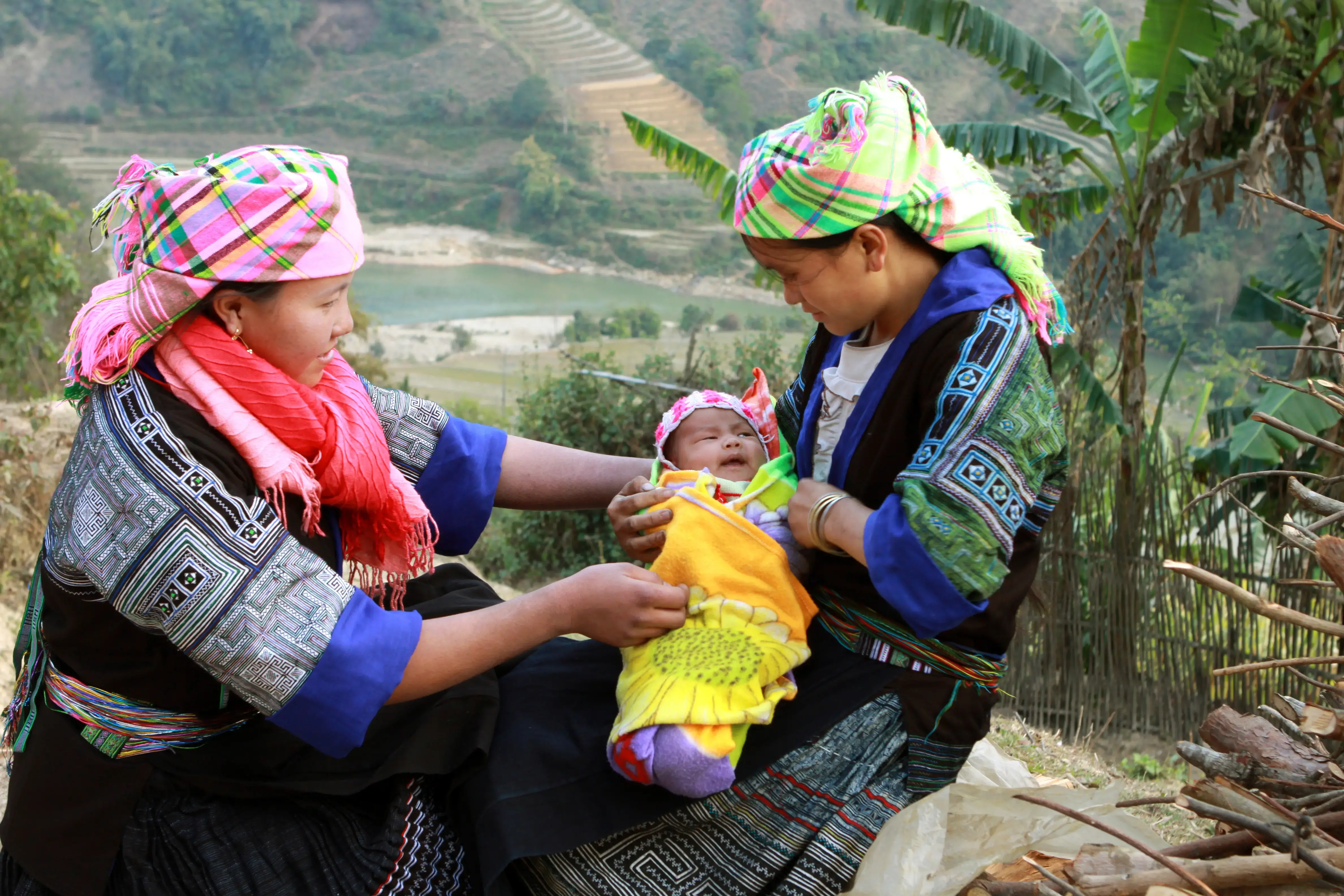Overview
Universal access to sexual and reproductive health is a human right, and it is a critical component to saving the lives of women and promoting gender equality. It is at the core of sustainable development. The International Conference on Population and Development (ICPD), which was held in 1994 in Cairo, affirmed that everyone has the right to enjoy sexual and reproductive health and called upon countries to achieve universal access to sexual and reproductive health services. This includes maternal health, safe motherhood, voluntary family planning, sexually transmitted infections including HIV and HPV, and SRH for young people.
Although Viet Nam has made substantial progress in improving the sexual and reproductive health status of the general population in the past decades, and prominently Viet Nam was one of the only 6 countries in the world that achieved the maternal mortality reduction target of the MDGs in 2015, there exist challenging issues, disparities, even problems in sexual and reproductive health and rights (SRHR) that need to be addressed to ensure better SRHR for everyone to contribute to the joint efforts to make sure no one is left behind.
According to a study conducted by GSO (2021), a majority of Vietnamese women make their own informed decisions on sexual intercourse (84.8%) and the use of contraception (70.7%). However, autonomy decision on sexual intercourse is lower among women who are Mong ethnic (42.6%) and have pre-primary or no education (61.4%) and autonomy decision on contraceptive use is lower among adolescents aged 15-19 years (25.5%) and Mong women (61.2%).
The maternal mortality ratio has declined to 46 maternal deaths per 100,000 live births at the national level. Yet, it still remains as high as 100-150 per 100,000 live births in mountainous and ethnic minority regions, particularly in Northern Midlands and Mountains, and Central Highlands. At national level, the percentage of women receiving at least 4 antenatal care visits and healthcare facility-based delivery are very good at 88.2% and 96.3% respectively. In contrast, these percentages are just 10.6% and 37% in Mong ethnic group. The emerging concern related to delivery is C-Section. As reported in SDGCW 2021, the C-section accounted for 34.4% of maternal deliveries (20.5% decided before onset of labour pains and 13.9% after onset of labour pains), increased 6.9% points compared to that of the MICS 2014 while the normal C-Section rate should be around at 10-15% as recommended by WHO.
Nationally, 59.8% of women currently married or in union use modern contraceptive methods. The total unmet need for family planning is 10.1% in the national average but much higher at 17.7% among ethnic minorities in remote mountainous regions (UNFPA, 2021) and even worse at 40.7% among sexually active women who are currently unmarried or not in union.
Nationwide, the abortion ratio is 68 per 1,000 live births but this ratio is 196.9 per 1,000 live births in Ha Noi and 127.5 per 1,000 live births in the Red River Delta region. The issue is even more problematic with 53.6 % of the total induced abortion cases being unwanted pregnancies accounting for more than half of the reported latest abortions and fetal sex preference accounting for 1.6% of the abortion cases.
With regards to Cervical Cancer, this pivotal topic is currently getting more and more special attention from the Ministry of Health of Vietnam as well as from international communities. As reported by UNFPA Vietnam and the Cancer Council New South Wale, Australia in 2021, cervical cancer was the sixth most common cancer in women in Viet Nam with 4,177 new cases (7.1 per 100,000 women) and 2,420 deaths (4.0 per 100,000 women) annually. Unless preventative action is taken, a total of 218,907 Vietnamese women are expected to die from cervical cancer by 2070 and 449,656 by 2120. Regarding cervical cancer prevention measures, only 28.2% of women were screened for cervical cancer and 12.0% vaccinated with HPV vaccines (15.6% in urban and 9.2% in rural areas).
The comprehensive understanding of HIV prevention is still very low at 54.1% in men and 43.2% in women. More importantly, discriminatory attitudes against people living with HIV is still high at 36.1 % in women and 39.7% in men. This could be one of the reasons leading to the low proportion of both men and women who have tested for HIV and know their test results in the past 12 months (5.5% and 9.3% respectively). Only 10.2% of women in their most recent pregnancy are offered an HIV test, tested, received test results, and received post-test HIV health information or counseling. This rate is also much lower among women aged 15-24 years (7.7%).
To maintain achievements gained and continue improving the SRH situation especially further reducing maternal mortality, UNFPA collaborates with the Ministry of Health (MOH) in Vietnam and many different stakeholders, and partners to ensure universal access to an integrated package of quality sexual and reproductive health information and services. Strategic and targeted interventions are focused on:
- Data generation, analysis, and transformation for policies, guidelines, and tools that address the special needs of vulnerable populations;
- Elaboration of innovative financing mechanisms including private sector financing and sub-national public financing, particularly to address emerging SRHR issues such as cervical cancer screening and human papillomavirus vaccinations;
- Further application of digital technologies such as “tele-health” to cover hard-to-reach remote and ethnic minority locations;
- Enhancing the health management information system;
- Strengthened mechanisms for humanitarian preparedness and response to ensure the protection of vulnerable populations; and
- Multisectoral approach to SRHR for young people and a nationwide roll-out of comprehensive sexuality education and life-skill education including HIV prevention such as e-learning for in and out-of-school youth as well as young people with disabilities


